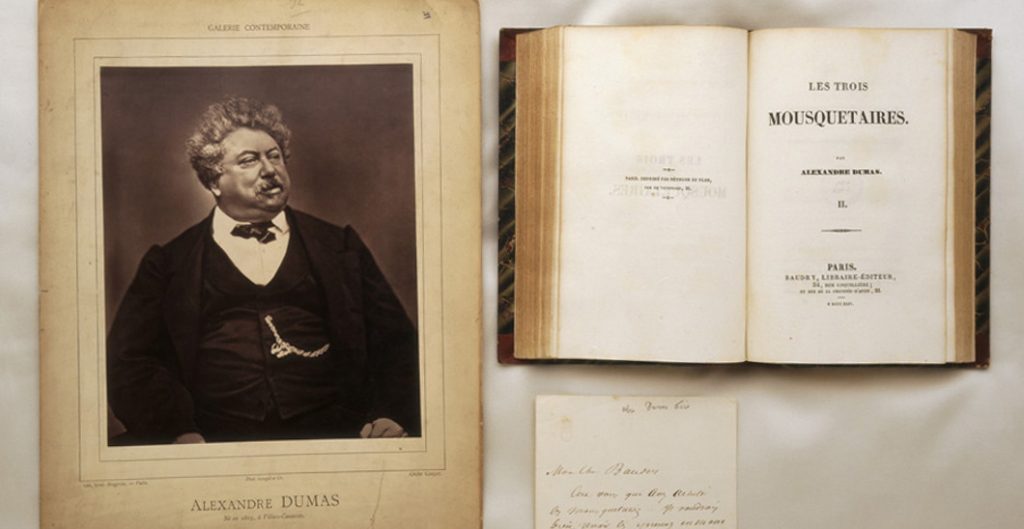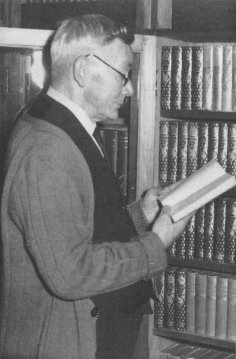It can be something of a lonely life working as a French to English translator in a small provincial town in the north of New Zealand. Most of my contact with the translation community and clients comes via the internet. And although cities like Auckland and Wellington have seen a significant increase in the numbers of French people living there in recent years, the French community in Northland still borders on tiny. Opportunities to speak French outside of my own bilingual home environment are few and far between.
So it was something of a surprise to learn recently that Whangārei (population currently 57,000) used to be home to one of the world’s leading authorities on the French writer, Alexandre Dumas père (1802-1870), best known for popular historical novels like The Three Musketeers, and The Count of Monte Cristo. Perhaps even more interesting from a New Zealand literary history point of view, is that the authority in question was Frank Reed (1874-1953), the older brother of A H Reed (1875-1975), the well-known writer and founder of the Reed publishing house.

The Reed family were from Hayes, Middlesex in England, now close to Heathrow airport. They emigrated to New Zealand in 1887, eventually settling in Whangarei, where their father, James Reed, found work on the northern Kauri gumfields. After leaving school, both Reed brothers started working with their father digging for Kauri gum before Frank Reed started an apprenticeship with the Whangārei pharmacist in 1888 at the age of 14. It was a profession he would keep until his early retirement in 1926.
Frank Reed’s interest in Alexandre Dumas had started with his novel The Queen’s Necklace, one of twelve precious books that Reed was allowed to take in his baggage for the voyage to New Zealand. He was a voracious reader, and upon settling in Whangārei had soon worked his way through more of Dumas’ novels, Ascanio, Isabel of Bavaria, and The Black Tulip found in the local Whangārei library (a “dimly-lit building” according to Reed, who bemoaned the “shabby bindings of the majority of its volumes”1).
His interest in Dumas had been piqued, but information on Dumas in English in the late 19th century was still scarce. From his isolated location in Whangārei, Reed had to make do with gathering what information he could about the extent of Dumas’ published output (which is monumental, taking in a number of different genres and totalling around 100,000 pages) from publishers’ advertisements in the books he had read. Soon he was forwarding desiderata lists to Auckland-based booksellers, and eventually to book dealers in England.
This correspondence abroad began in the early years of the 20th century after Reed got his hands on a prospectus from London-based publisher Methuen, which had planned a complete translated edition of Dumas’ novels to celebrate the 1902 centenary of his birth. This listed a large number of Dumas’ works that were previously unknown to Reed. It was the start of several invaluable long-distance relationships with London booksellers who would track down rare Dumas items for Reed, and which included both English and French first editions of a number of works. Some of these relationships endured over many years, and went far beyond that of retailer and customer.
Perhaps almost inevitably, this also brought Reed into contact with Robert Singleton Garnett, at the time one of the chief English translators of Dumas, and the recognized English-language authority on his work. Through their letters over a period of 16 years, the two struck up a friendship, and Garnett also sourced a number of rare Dumas items for Reed, including many in manuscript. It was a measure of their friendship that when Garnett died in 1932, he willed his entire Dumas collection of 740 items to Reed, an unexpected windfall that was duly shipped from London to Whangarei.
In 1919, one of the works that Garnett managed to find for Reed was the standard French bibliography of Dumas’ work, Alexandre Dumas et Son Œuvre (1884) by Charles Glinel. Importantly, this new acquisition led Reed to start learning French, giving him access to much more information on Dumas, and then to start translating the work of Dumas in his turn. Over the following 34 years, Reed translated many of Dumas’ works into English, including plays, poetry and lesser-known prose works, some for the first time. In total, his translations run to around 20,000 typescript pages. Much of this translation work was done after Reed had put in a 12-hour day at his pharmacy and around the demands of family life. This would represent a significant accomplishment today with all the benefit of online resources, let alone in the first half of the 20th century, far removed from the literary centres of London and Paris.

In 1933, with the help of his bookselling contacts in London, Reed also published the result of many years of research, his Bibliography of Alexandre Dumas Père. The first bibliography of Dumas’ work in English that was anywhere near complete, it was received with wide international acclaim. As with his translation work, the fact that Reed was able to put this together having never left New Zealand, and seldom leaving Whangārei, seems little short of remarkable. Reed’s work also proved to have an enduring influence, forming the basis of several later bibliographies published by other authors.
And his efforts didn’t go unnoticed by the French. In 1927, the French government awarded Reed the title of Officier d’Académie in the Ordre des Palmes Académiques for his services to French literature. After the publication of his bibliography, in 1934 Reed was given the further title of Officier de l’Instruction Publique for his services to French language and culture.
Reed arranged for his large Dumas collection to go the Auckland central library (perhaps remembering those shabby bindings in Whangārei!) after his death in 1953, where it is still housed. The Reed Dumas collection forms part of the library’s Sir George Gray Special Collections, and is comprised of 3,350 volumes. This includes 2,000 original holographs by Dumas, 329 Belgian, 166 French, and 370 English first editions of Dumas’ works, 51 typescript volumes of Reed’s translations, letters, portraits and Dumas-related material, and the Robert Singleton Garnett Collection.
Further information about Reed’s life and work (and the main source of information in this post) can be found in article written by Donald Kerr, Frank W. Reed and his Dumas Collection. Kerr completed an M.A. thesis on Reed at Wellington’s Victoria University in 1992, and is now the Special Collections Librarian at the University of Otago. The Auckland central library also has information about the Reed Dumas collection.
1 From Frank Reed’s unpublished autobiography, The Trail of an Alexandrian, Vol. 2, p. 240.